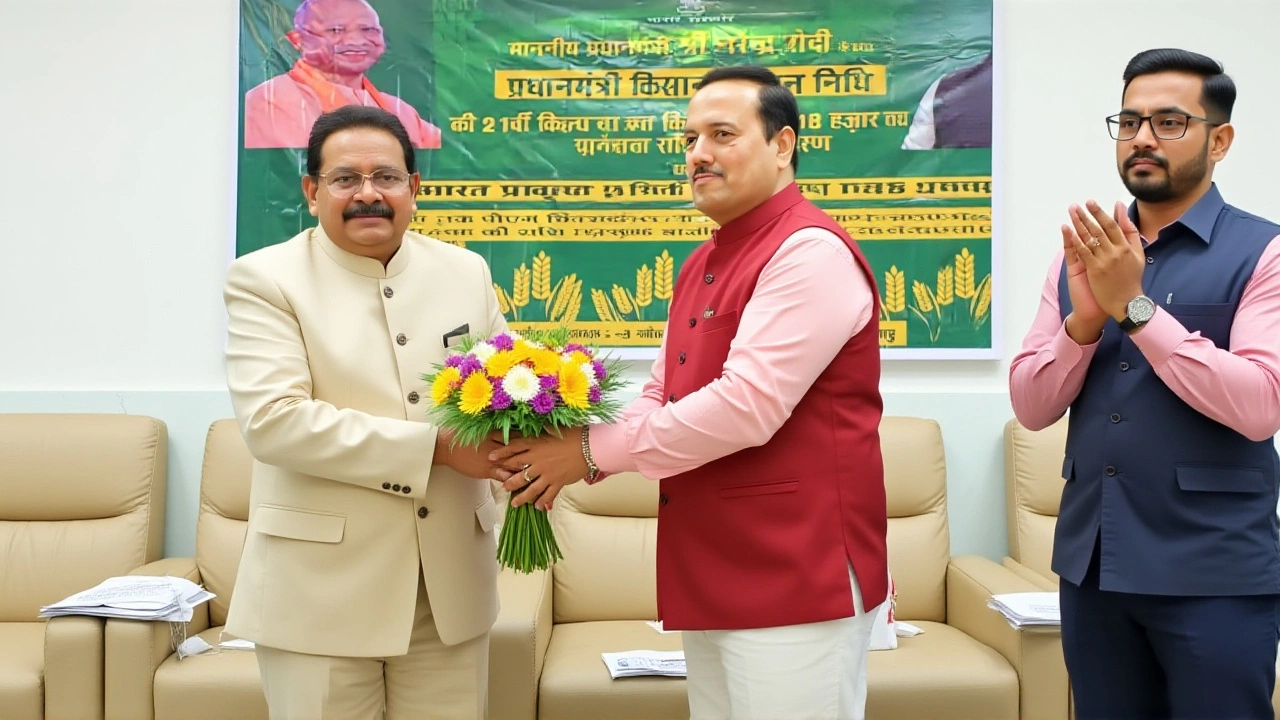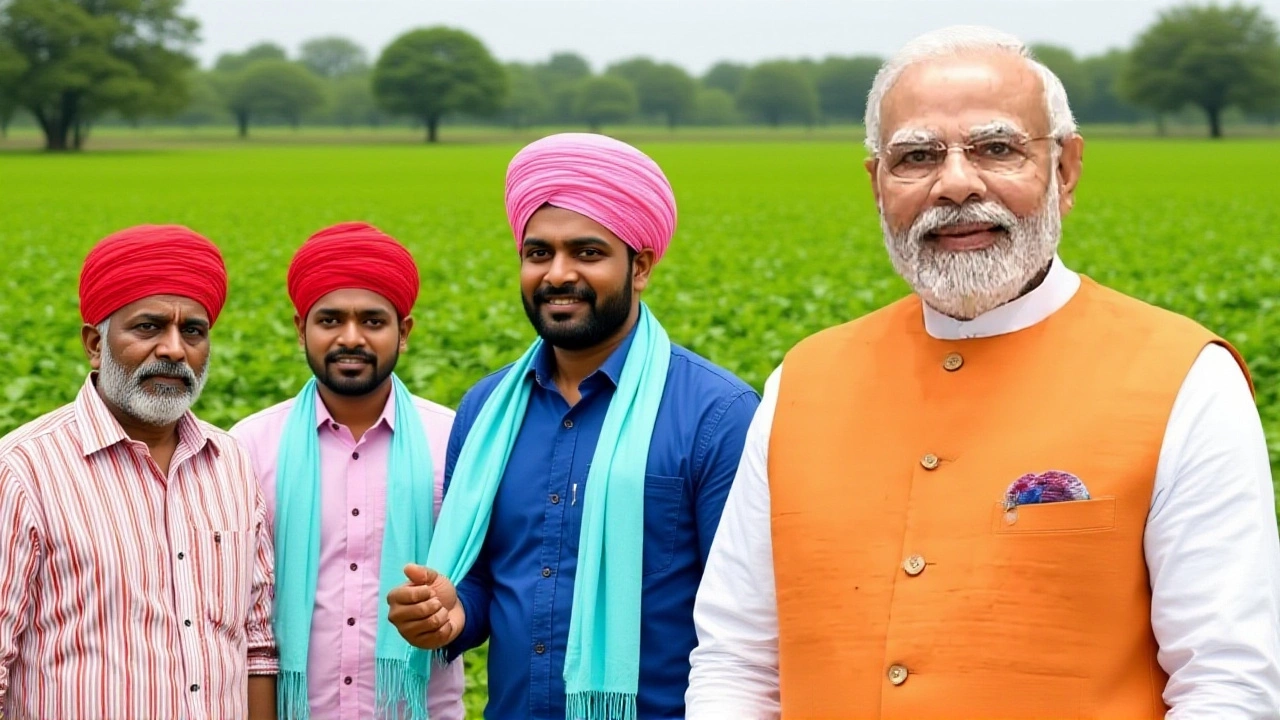PM Modi Disburses ₹18,000 Crore in 21st PM-Kisan Installment from Coimbatore to 9 Crore Farmers
 Nov, 20 2025
Nov, 20 2025
On the 21st disbursement of the PM Kisan Samman Nidhi schemeCoimbatore, Prime Minister Narendra Modi transferred ₹18,000 crore directly into the bank accounts of over 9 crore (90 million) eligible farmers at 2:15 p.m. on November 19, 2025. The ceremony, held at a government complex in Coimbatore, Tamil Nadu, marked the largest single-day financial push under India’s flagship farm income support program — a lifeline for small and marginal farmers who make up nearly 86% of the country’s agricultural workforce.
Why This Disbursement Matters More Than Ever
The ₹2,000 per installment isn’t just cash — it’s a buffer against volatile crop prices, erratic monsoons, and rising input costs. For a farmer in Bihar or Odisha, that money buys seeds, fertilizer, or medicine for a sick child. This round, the government moved ₹18,000 crore in under 72 hours through Direct Benefit Transfer (DBT), bypassing middlemen and reducing leakage. The total disbursed under the scheme since its launch in February 2019 now exceeds ₹3.7 lakh crore. That’s more than the annual budget of several Indian states.
What’s striking isn’t just the scale, but the precision. The Ministry of Agriculture and Farmers Welfare has spent the last year cleaning up beneficiary lists. Around 3.1 million (31 lakh) suspicious entries — duplicate names, deceased beneficiaries, non-farmers — were flagged and removed. It’s not charity anymore. It’s targeted welfare.
Who Got Paid — And Who Didn’t
Not every farmer received the money. Those who haven’t linked their Aadhaar to their bank accounts, or who haven’t completed e-KYC verification, were automatically excluded. Amar Ujala reported that over 1.2 million farmers missed this disbursement due to incomplete documentation — a number that’s shrunk by 40% since the 19th installment. The government’s message is clear: if you want the benefit, you must complete the paperwork.
And there’s a twist. According to BVMJ.in, some farmers in Maharashtra and Madhya Pradesh received an extra ₹4,000 — a one-time bonus tied to their participation in soil health card programs or adoption of organic practices. It’s a quiet incentive, but it’s working. Farmers who previously ignored digital compliance are now rushing to update their records.
The Tech Behind the Transfer
Behind the scenes, the system is a marvel of digital governance. The PM Kisan portal (pmkisan.gov.in) now handles over 120 million queries per month. Farmers can check their status using just their Aadhaar number and a captcha — no app, no registration. Even those without smartphones can call the toll-free helpline and get an automated SMS update. In villages where internet is spotty, voice-based banking services are filling the gap.
The entire process is audited in real time by the National Informatics Centre. Every transaction is timestamped, geotagged, and cross-referenced with land records from state revenue departments. If a farmer’s land is registered under a corporate entity, they’re flagged. If the bank account hasn’t been active in six months, the payment is held. This isn’t just efficiency — it’s accountability.

What Happened Last Time — And What’s Next
The 20th installment was released on August 2, 2025, from Varanasi, Uttar Pradesh. That round saw ₹17,900 crore sent to 8.9 crore farmers. This one, just 109 days later, is bigger — not just in amount, but in reach. The government has already started preparing for the 22nd disbursement, expected around February 2026, ahead of the Rabi crop season.
But pressure is mounting. The Supreme Court recently asked the Centre to clarify how it verifies land ownership for beneficiaries. Some states, like West Bengal and Kerala, have raised concerns about exclusion errors. Meanwhile, opposition parties are calling for doubling the annual amount to ₹12,000 — a demand the government says it’s studying, but won’t commit to before the next budget.
The Bigger Picture: A New Social Contract
This scheme isn’t just about money. It’s about dignity. For the first time, millions of farmers — many of whom’ve never received a direct government payout — are being treated as formal economic actors. The ₹6,000 per year isn’t enough to live on, but it’s enough to keep them from selling their land, or sending their kids to work in cities.
Compare this to the 2014 subsidy model — where fertilizer and power were subsidized, but the money often ended up with traders. Now, cash goes straight to the hand that holds the plough. And that’s changed everything. A 2024 NITI Aayog study found that PM-Kisan beneficiaries increased their spending on education by 22% and healthcare by 18% in just two years.
What’s next? Experts say the real challenge isn’t disbursement — it’s sustainability. With inflation eating into real value, the ₹2,000 payment is worth 23% less than in 2019. Indexing it to CPI is now on the table. So is expanding coverage to tenant farmers and women-headed households, who remain excluded under current land-ownership rules.
Frequently Asked Questions
How can a farmer check if they received the 21st PM-Kisan installment?
Farmers can visit pmkisan.gov.in, click on ‘Know Your Status’, and enter their Aadhaar number along with the captcha. Alternatively, they can call the toll-free number 155261 or use USSD-based banking services on any mobile phone. The system sends an SMS confirmation within 24 hours of successful transfer.
Why did some farmers miss the payment even though they’re eligible?
The most common reasons are unlinked Aadhaar-bank accounts, incomplete e-KYC, or names flagged during verification for duplicate entries. Over 1.2 million farmers were excluded this round due to documentation gaps. The government has launched mobile camps in 300 districts to help farmers complete these formalities before the next disbursement.
What’s the timeline for the next PM-Kisan installment?
The 22nd installment is expected around February 2026, ahead of the Rabi sowing season. While no official date has been announced, historical patterns show payments occur every 105–115 days. The Ministry typically confirms the date 10–15 days in advance via press release and SMS alerts to beneficiaries.
Are tenant farmers or women farmers included in this scheme?
Currently, only land-owning farmers registered in state revenue records are eligible. Tenant farmers and women who don’t hold land titles in their names are excluded — a major gap critics say undermines gender equity. A draft policy to include tenant farmers is under review by the Ministry, but no timeline has been released.
How has the scheme impacted rural economies?
A 2024 NITI Aayog study found that PM-Kisan funds increased rural retail sales by 14%, boosted local small businesses, and reduced migration to cities by 9% in beneficiary districts. In states like Odisha and Jharkhand, the money helped revive local markets for seeds, tools, and livestock feed — creating indirect employment for thousands.
Is there a plan to increase the annual amount from ₹6,000?
The government has acknowledged that inflation has eroded the real value of the payment, which now equals only ₹4,600 in 2019 terms. While no decision has been made, internal discussions are underway to either index the amount to CPI or increase it to ₹8,000–₹10,000 annually. Any change would likely be announced in the Union Budget 2026.